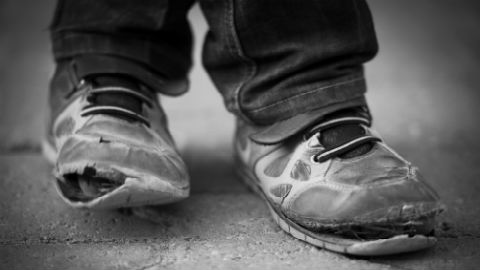A UAB research sheds light on poverty's official figures

23/01/2017
According to the study by the UAB's Centre for Demographic Studies (CED), official indicator of poverty in Spain – which point to a shy increase from 20% to 22% in the 2004-2014 period – do not adequately reflect the recent changes in Spain's economy since the onset of the crisis. When the poverty threshold is anchored in 2009 values (around the start of the crisis), the number of poor people between 2010 and 2014 go from 10.2 to 14.7 millions, an increase of 45%.
A study by the UAB's Centre for Demographic Studies (CED) - published today in the journal Perspectives Demogràfiques - questions the possibility of official figures in poverty not being sensitive to one of the harshest economic crises of the past decades in Spain. This can be seen by the fact that official measures have remained quite stable during the past decade. They explain this phenomenon with the definition that statistical institutes use when deciding who is poor and who is not. “If we move away from official measures which are excessively accommodative, there are reasons to be pessimistic”, the researchers and authors of the study point out.
In EU countries, a person is poor (official measure) when their income is less than 60% of the average income of the country. “The great inconvenience of this measure is that it only takes into account the relative position of individuals, regardless of their absolute levels of income, and therefore they are completely insensitive to the periods of generalised economic expansion and contraction undergone in Spain in the past 10 years”, says Iñaki Permanyer, CED-UAB researcher and author of the article, alongside Pinar Köksel, also researcher at the CED-UAB.
According to researchers, it is important to measure economic poverty by using threshold values from 2009 (i.e., taking the standard of living around the onset of the crisis as the reference value). This is when the results are shocking: from 2010 to 2014 the number of poor people rose from 10,206,684 to 14,794,664, representing an absolute increase of 4,587,980 individuals (i.e., a relative increase of 45% in relation to initial numbers).
For researcher Iñaki Permanyer “the way in which we define and measure social phenomena is vastly important not only when trying to depict and understand the world around us, but also when we want to modify and remedy it”.
The study analyses the recent evolution in poverty levels based on three basic characteristics: age, country of origin and education level. Increase in poverty has been very strong among children and the working-age population.
- WITH REGARD TO AGE:
When official relative poverty measures between 2009 and 2014 are compared, it is made clear that an increase in relative poverty has occurred in all age groups below 65, together with a decrease in all groups above the age of retirement. People of retirement age is the sector of the population by age group which seems to have been least affected by the economic crisis. The high rates of youth and children poverty would have been much higher had it not been for inter-generational co-residence patterns favouring cohabitation with their elders up to quite advanced ages.
- WITH REGARD TO COUNTRY OF ORIGIN:
According to the new measures, more than half of the people born elsewhere were poor in 2014. The difference between Spanish-born and foreign-born groups is increasing over time.
- WITH REGARD TO EDUCATION LEVEL:
The higher the level of education of individuals, the lower the incidence of poverty. Although people with university studies are less affected by the incidence of poverty it has, nevertheless, increased across the board of educational levels. For individuals who have completed secondary school or with university degrees the incidence of poverty has doubled in only five years, while almost one in every two of the over-25s without primary education is poor.
Although five years remain until the deadline of the Europe 2020 programme (which aimed to reduce poverty in Spain by 1.4 million people in the 2010-2020 period), the possibilities or reaching this goal seem particularly scarce, according to the data revealed by the researchers in this study.
ORIGINAL ARTICLE:
Iñaki Permanyer and Pinar Köksel. "Alternative Standpoints on Poverty in Spain: A Question of Definition and Measure". Perspectives Demogràfiques. January 2017